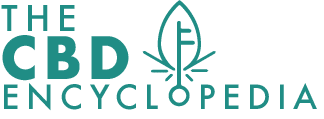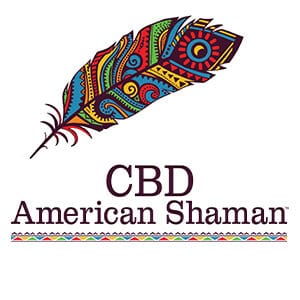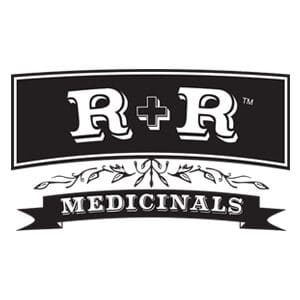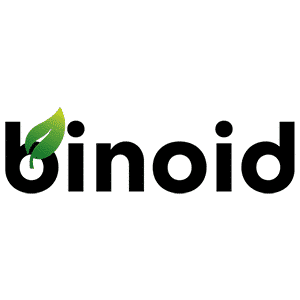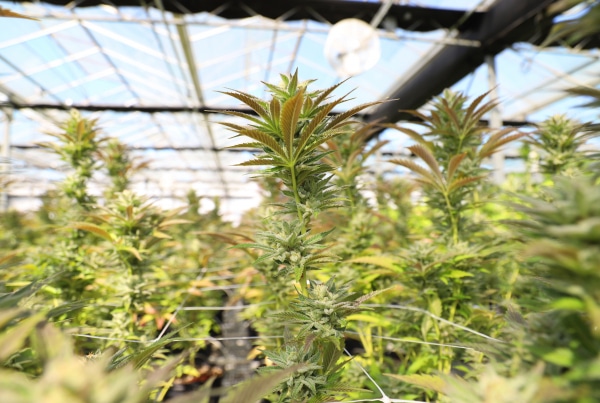
Disclaimer: This content is not intended to be a substitute for professional medical advice, diagnosis, or treatment. Always seek the advice of your physician or other qualified healthprovider with any questions you may have regarding a medical condition.
Many people incorporate CBD into their treatment regimen for Neurological health, injuries, and disorders for a plant-based, natural relief. Many studies support the potential neuroprotective properties of CBD. Anecdotal evidence is even stronger for the management of ADHD, reduction of pain and inflammation, and positive effects on mood and cognition. The use of CBD for epilepsy and seizures, especially in childhood cases, is easily the most well-known and widely accepted therapeutic value of the cannabinoid. In this guide, we detail best practices for using and dosing CBD for your self-care regimen when addressing neurological health.
CBD Usage And Dosage For Neurological Conditions
When designing a cannabidiol-based regimen for managing neurological injuries or disorders, it’s important to note that CBD has shown many positive results but that more studies are necessary to be conclusive on this topic. Still, many people have utilized CBD regularly with positive results. If you decide to try it for yourself, note that CBD may be best used as a preventative first, and then can be used to manage additional flare ups. This is true even for managing neurological injuries and disorders, but for the best effects, you’ll want to establish a baseline amount of CBD in your system to help prevent symptoms before they start.
There are a number of different CBD products that may be suitable, but for managing neurological injuries or disorders we recommend ingesting full spectrum CBD oil daily in the form of Tinctures or Gel Capsules.
These two products differ in two ways: form factor and dosage. When considering the differences between a sublingual tincture and pre-measured CBD capsules, the difference is obvious. The best CBD tinctures and gel capsules will also utilize a high-quality carrier oil, like MCT oil or hemp oil, in order to aid the absorption of CBD in the body.
Additionally, many people find that they still need a method to help them manage acute flare-ups from neurological disorders. Depending on your preference, there are multiple methods you could choose for managing these flare ups.
Whatever the cause – we recommend vaporizing CBD isolate to combat these acute flare-ups. Vaporizing or dabbing CBD isolate allows you to instantly experience relief. CBD isolate is a 99% pure version of CBD and vaping allows for instant absorption, and near instantaneous relief.
You can also take more CBD capsules or another tincture dose to manage these flare-ups, but these methods will take longer to take effect than vaping CBD isolate, so they may not be as useful for managing sudden flares.
Often, the best way to manage moderate to severe epilepsy and seizure disorders is to combine multiple different products, based on your needs, to provide relief and preventative healing all day long.
Dosage
We suggest those suffering from headaches or migraines start with 5-10mg per day of CBD.
We suggest individuals who have brain injuries start with 15mg per day of CBD.
We suggest those suffering from any kind of seizures start with 5-10mg per day of CBD.
We suggest those individuals with ADD or ADHD start with 15mg per day of CBD.
If these initial recommended dosages do not provide the desired effects, we suggest increasing by increments of 5-10mg until the desired effect is achieved. Using a CBD tincture makes this simple because it allows you to increase the dose by small increments for a very personalized dosing experience.
If you decide to go the other route and try CBD gel capsules, you can start with the lowest available dose and increase from there. There’s no harm starting at whatever dose is provided, like a 10mg capsule, because CBD has no severe side effects or chance of fatal overdose.
From there, simply increase your dose as needed, leaving plenty of time in between adjustments to fully monitor the effects. Remember that ingestible CBD products like these take effect slowly—it can take up to 90 minutes for them to take full effect. For most people this translates to extended relief. Many people report that the effects of tinctures and capsules last day!
Vaping CBD is slightly different, as it can be difficult to monitor the amount of CBD you intake with each puff. However, the effects have a quick onset, providing an easy opportunity to monitor the effects and stack another dose on top if needed. Vaping CBD should provide full therapeutic effects in about 10 minutes. Then you can decide if you need to take another fast-acting dose to manage symptoms.
CBD For Migraines And Headaches
Migraines are an intense form of recurring headache often accompanied by nausea and sensitivity to light and sound. Migraines are very common, affecting more than 38 million people in the United States. The most common treatments for migraines are pharmaceutical drugs like triptans, ergots, opioids, beta-blockers, and antidepressants.
As you’re probably aware, these frequently prescribed medications can cause dependency and often result in moderate to severe side effects. It’s important to understand that pharmaceutical drugs are not your only option for dealing with migraines. In addition to self-care (lifestyle choices), many people incorporate CBD into their treatment regimen for plant-based, natural migraine headache relief.
Research is still in its early stages, but that hasn’t slowed the spread of positive reports when using CBD for migraines. We’ll show you the evidence from several medical studies conducted over the past ten years. These studies evaluated CBD’s medical efficacy in treating those who suffer from various types of headaches – including migraines. We will address the results below.
Studies that Support the Use of CBD for Headaches and Migraines
CBD was discovered nearly a hundred years ago, but news of many health benefits didn’t surface until more recently. Although research regarding CBD is still in its infancy, efforts are quickly advancing. Various anecdotal and clinical reports have revealed ways in which CBD could be useful for headaches, like its effects of CBD on inflammation and pain. Now, researchers are increasingly interested in the effects of CBD for headaches and migraines.
While there are only a few studies that specifically look at the effects of cannabidiol on headaches and migraines, they all boast some impressive numbers. One study suggests that CBD helped patients with recurring headaches experience up to 55% less pain with far fewer side effects than when treating headaches with prescription medications.
Other research suggests that cannabidiol may be beneficial in multiple ways that make it useful for managing headaches, like by managing pain and inflammation in the body. Plus, studies show that many people who experience recurring migraines have lower levels of a certain endocannabinoid, which may help explain how CBD balances the endocannabinoid system to help manage headaches.
Research regarding the endocannabinoid system and its role in key processes that regulate inflammation and pain that is caused by headaches and migraines provides a solid foundation for future research efforts. Though existing research is considerably preliminary, research efforts regarding CBD for migraines are expected to continue to incline, as CBD could one day offer a suitable alternative to high-risk medications. The following studies help illuminate the connection between CBD and migraines:
Cannabinoids suitable for migraine prevention
A 2017 study by the 3rd Congress of the European Academy of Neurology reported that the active compounds in cannabis (THC & CBD) are more effective at reducing the frequency of acute migraine headaches than prescription drugs, and cause fewer side effects. The study found that sufferers of chronic migraines given a 200mg dose of a THC/CBD blend each day for three months experienced 55% less pain.
The second part of the study looked at those suffering from chronic acute migraines and those suffering from cluster headaches. Participants were given either the THC/CBD blend or a pharmaceutical – antidepressants for migraines and calcium channel blockers for cluster headaches. The study concluded that THC/CBD was better at reducing the frequency of migraine attacks relative to the pharmaceutical alternative. The study also found that the THC/CBD blend resulted in fewer side effects than the pharmaceutical alternative – fewer stomach aches and muscle pains.
Learn more: https://www.ncbi.nlm.nih.gov/pmc/articles/PMC5928495/
Effects of Medical Marijuana on Migraine Headache Frequency in an Adult Population.
A 2016 study evaluated the efficacy of medical marijuana in treating migraine headaches in 121 adults. The study concluded that “migraine headache frequency decreased from 10.4 to 4.6 headaches per month with the use of medical marijuana. Most patients used more than one form of marijuana and used it daily for prevention of migraine headache. Positive effects were reported in 48 patients (39.7%), with the most common effects reported being prevention of migraine headache with decreased frequency of migraine headache and aborted migraine headache.
Learn more: https://www.ncbi.nlm.nih.gov/pubmed/26749285
Endocannabinoid System and Migraine Pain: An Update
A 2018 study sought to explain how the endocannabinoid system links to headaches and concluded that many with recurring migraines have lower levels of a certain endocannabinoid, anandamide. The study shows that “Experimental and clinical data suggests indeed a link between dysregulation of this signaling complex and migraine headache. Clinical observations, in particular, show that the levels of anandamide (AEA)—one of the two primary endocannabinoid lipids—are reduced in cerebrospinal fluid and plasma of patients with chronic migraine (CM), and that this reduction is associated with pain facilitation in the spinal cord… Inhibition of AEA degradation via FAAH is a promising therapeutic target for migraine pain, since it is presumably associated to an increased availability of the endocannabinoid, specifically at the site where its formation is stimulated (e.g., trigeminal ganglion and/or meninges), thus prolonging its action.”
Learn More: https://www.ncbi.nlm.nih.gov/pmc/articles/PMC5867306/
The Use of Cannabis for Headache Disorders
A 2017 study looked at evidence regarding the use of cannabis (and CBD) for neuropathic pain and headaches. The study involves evidence from a variety of different applications over recent years and concludes that“ Although placebo-controlled clinical trials are still needed to appropriately determine efficacy, it appears likely that cannabis will emerge as a potential treatment for some headache sufferers.”
CBD For ADHD
Both adults and children are seeking out CBD to help aid in symptoms of ADD and ADHD. Attention Deficit (Hyperactivity) Disorders are extremely common, affecting between 6% and 11% of U.S. children in America.
The most common medical treatments for anxiety in the U.S. are the use of pharmaceutical drugs like stimulants (amphetamines), antihypertensive drugs, and cognition-enhancing medications. However, it’s important to realize that these pharmaceutical drugs often have severe side effects and are not your only option for treatment. In addition to self-care and therapy, many people incorporate CBD into their treatment regimen for natural, plant-based ADD/ADHD relief.
Much of the research concerning CBD for ADHD is still limited, and we still need more evidence before CBD can be established as an official treatment for these disorders. While we could always benefit from more research on CBD and ADHD, we’ve looked into a few medical studies that have been conducted over the past six years for reference. These studies evaluated CBD’s medical efficacy in treating those who suffer from ADD and ADHD. We will address the results below.
Studies that address the use of CBD with ADHD
Although THC’s impact on cognition and focus has been researched for decades, experts did not begin to dig into the true therapeutic values of CBD until recently. One important study outlines the strong anecdotal ties between cannabis and ADHD treatment.
This study may have contributed to the newfound interest in CBD for ADHD. Another reason is the lack of psychoactive effects CBD produces, which is important to note since ADHD often displays itself during childhood. To date, there have been a couple of studies that show great improvement in symptoms of ADHD when using CBD regularly.
Because CBD has been identified as a wake-promoting agent, researchers are interested in the mechanism through which CBD interacts with the brain. Because the endocannabinoid system is directly involved with most neuro-processes, many experts agree that there may be a strong tie.
For this reason, more research on CBD for ADHD is underway, and researchers all over the world are interested in uncovering exactly why and how to use cannabis to treat the condition. For now, the following studies help us understand the ties between cannabis and ADD and ADHD:
Cannabidiol and clozapine reverse MK-801-induced deficits in social interaction and hyperactivity in Sprague-Dawley rats.
A 2012 study looked at the effect of cannabidiol on rats treated with MK-801, a custom formula designed to mimic the effects of ADHD. “Results showed that the MK-801- (0.3 mg/kg) treated rats displayed reduced social investigative behavior, hyperactivity as well as reduced attention span. Pretreatment with the phytocannabinoid cannabidiol (3 mg/kg) not only normalized social investigative behavior but increased it beyond control levels. Both cannabidiol and clozapine inhibited MK-801-induced hyperactivity.”
Learn more: https://www.ncbi.nlm.nih.gov/pubmed/22495620
Cannabinoids in attention-deficit/hyperactivity disorder: a randomised-controlled trial.
A 2016 randomized study gave 30 adults diagnosed with ADHD either a “placebo or Sativex Oromucosal Spray, a cannabinoid medication containing a 1:1 ratio of delta-9-tetrahydrocannabinol (THC) to cannabidiol (CBD). In the intention to treat analysis, Sativex treatment was associated with a nominally significant improvement in hyperactivity/impulsivity and a trend for improvement in inattention. There were further indications for improvement in activity and cognitive performance, and emotional liability.
Learn more: https://www.europeanneuropsychopharmacology.com/article/S0924-977X(16)30912-9/pdf
“I Use Weed for My ADHD”: A Qualitative Analysis of Online Forum Discussions on Cannabis Use and ADHD
A unique study of anecdotal evidence from 2016 gives great representation of the use of cannabis for ADHD “…Clinical and anecdotal evidence suggest an increasingly popular perception that cannabis is therapeutic for ADHD. Given that the Internet is increasingly utilized as a source of healthcare information and may influence perceptions, [a 2016 study] conducted a qualitative analysis of online forum discussions, also referred to as threads, on the effects of cannabis on ADHD to systematically characterize the content patients and caregivers may encounter about ADHD and cannabis.”
The study found that, “Twenty-five (25%) percent of individual posts indicated that cannabis is therapeutic for ADHD, as opposed to 8% that it is harmful, 5% that it is both therapeutic and harmful, and 2% that it has no effect on ADHD. This pattern was generally consistent when the year of each post was considered. The greater endorsement of therapeutic versus harmful effects of cannabis did not generalize to mood, other (non-ADHD) psychiatric conditions, or overall domains of daily life. Additional themes emerged (e.g., cannabis being considered sanctioned by healthcare providers).”
The study went on to conclude, “Despite that there are no clinical recommendations or systematic research supporting the beneficial effects of cannabis use for ADHD, online discussions indicate that cannabis is considered therapeutic for ADHD-this is the first study to identify such a trend.”
Learn more: https://www.ncbi.nlm.nih.gov/pubmed/27227537
CBD For Concussions/Traumatic Brain Injuries
Although concussion and traumatic brain injury (or TBI) awareness has increased dramatically in the past twenty years or so, the efficacy of treating concussions with CBD has only quite recently become a part of the discussion. In fact, in 2003 the U.S. Department of Health and Human Services was granted a patent on “cannabinoids as antioxidants and neuroprotectants.”
Several medical studies have looked into treating Traumatic Brain Injuries (TBI) and Chronic Traumatic Encephalopathy (CTE) with CBD. These types of injuries are often associated with sports and are very common—it’s estimated that 1.6-3.8 million sports and recreation related concussions occur in the U.S. each year. Concussions and other brain injuries are usually treated with self-care, rehabilitation and sometimes prescription pain medications. Rather than numbing the pain with prescriptions, we suggest looking into the potential neuroprotective properties of CBD.
There’s plenty of interest surrounding the use of CBD for Concussions, and as a result, it is one of the most heavily researched areas concerning the cannabinoid. Still, more research is needed before CBD can be established as an official treatment for brain injuries. In order to understand CBD’s neuroprotective effects, we turn to a series of medical studies that have been conducted over the past twenty years. These studies evaluated CBD’s medical efficacy in treating those who suffer from various types of traumatic brain injuries. We will address the results below.
Studies that Exist to Support the Use of CBD in Concussions and Brain Injuries
CBD was discovered far before researchers actually took an interest in it, but in the past decade, many health benefits have been attributed to the cannabinoid. Research has since identified many of the processes regulated by the endocannabinoid system, or the mechanism by which CBD interacts with the body. Many of these processes are directly involved with the brain and various neurological functions, as well as with immune system responses of inflammation and pain.
Now, researchers are particularly interested in the effects of CBD in the area of brain injuries, and many studies show a clear connection between CBD and the brain, with most of the emphasis on the neuroprotective properties of cannabidiol.
Further research suggests that cannabidiol may be effective in reversing some types of brain injuries, or preventing further damage from severe brain injuries as they heal. This is because CBD may promote the growth of new neurons, which act as replacements for neurons damaged during the injury to increase brain functioning.
Research also shows that the mechanism through which CBD interacts with the body, the Endocannabinoid System, has a direct impact on most brain functions, including the processing of signals of pain and inflammation. Research outlining the anti-inflammatory and pain-relieving properties of CBD suggest that it could also be useful in managing the side effects of injuries to the head, like swelling and discomfort.
Because of the strong connection between CBD and brain function, research efforts regarding the use of CBD for brain injuries are expected to continue to grow, which is a necessary step towards officially establishing CBD as a treatment for concussions and other brain injuries. For now, though, the following studies help us understand the impact that CBD has on the brain and the role that the cannabinoid plays in neuroprotection and healing:
Cannabidiol and (−)Δ9-tetrahydrocannabinol are neuroprotective antioxidants.
The first study we address is actually the very same study that the U.S. Government used to substantiate their patent claim proving CBD as neuroprotectants. The 1998 study found that “cannabidiol prevented cell death” in rats induced with glutamate neurotoxicity. It goes on to conclude, “cannabidiol and other cannabinoids such as THC are potent antioxidants that protect neurons from glutamate-induced death without cannabinoid receptor activation.”
Learn more: http://www.pnas.org/content/95/14/8268
Cannabidiol administration after hypoxia-ischemia to newborn rats reduces long-term brain injury and restores neurobehavioral function.
A 2012 study concluded that, “CBD administration after HI [hypoxia-ischemia] injury to newborn rats led to long-lasting neuroprotection, with the overall effect of promoting greater functional rather than histological recovery. These effects of CBD were not associated with any side effects. These results emphasize the interest in CBD as a neuroprotective agent for neonatal HI.”
Learn more: https://www.ncbi.nlm.nih.gov/pubmed/22659086
Neuroprotection and reduction of glial reaction by cannabidiol treatment after sciatic nerve transection in neonatal rats.
A 2013 study evaluated the neuroprotective potential of CBD on lab rats experiencing degeneration of both motor and sensory neurons. The study “revealed both motor and sensory neuron rescue following treatment with CBD (15 and 30 mg/kg)…The present results show that CBD possesses neuroprotective characteristics that may, in turn, be promising for future clinical use.”
Learn more: https://www.ncbi.nlm.nih.gov/pubmed/23981015
Protective effects of cannabidiol against hippocampal cell death and cognitive impairment induced by bilateral common carotid artery occlusion in mice.
A 2014 study found that CBD reduces cognitive impairment artificial induced in mice. The study suggests a “protective effect of CBD on neuronal death induced by ischemia and indicates that CBD might exert beneficial therapeutic effects in brain ischemia.”
Learn more: https://www.ncbi.nlm.nih.gov/pubmed/24532152
Review of the neurological benefits of phytocannabinoids
A 2018 review of the neurological benefits of phytocannabinoids sums it best, “Animal studies indicate that post-head injury administration of exogenous CBD reduces short-term brain damage by improving brain metabolic activity, reducing cerebral hemodynamic impairment, and decreasing brain edema and seizures. These benefits are believed to be due to CBD’s ability to increase anandamide.”
Learn more: https://www.ncbi.nlm.nih.gov/pmc/articles/PMC5938896/
Cannabidiol reduces brain damage and improves functional recovery in a neonatal rat model of arterial ischemic stroke.
Another 2017 found that cannabidiol (CBD) reduces brain damage and improves functional recovery. More specifically, “CBD administration after MCAO led to long-term functional recovery, reducing neuronal loss and astrogliosis, and modulating apoptosis, metabolic derangement, excitotoxicity and neuro-inflammation.”
Learn more: https://www.ncbi.nlm.nih.gov/pubmed/28012949
Plastic and Neuroprotective Mechanisms Involved in the Therapeutic Effects of Cannabidiol in Psychiatric Disorders
A 2017 study “found that CBD modulates cell fate regulatory pathways such as autophagy and others critical pathways for neuronal survival in neurodegenerative experimental models, suggesting the potential benefit of CBD treatment for psychiatric/cognitive symptoms associated with neurodegeneration.”
Learn more: https://www.ncbi.nlm.nih.gov/pmc/articles/PMC5441138
Cannabidiol, neuroprotection and neuropsychiatric disorders.
A 2016 medical review succinctly stated that, “CBD affects synaptic plasticity and facilitates neurogenesis” (the growth of new neurons).
Learn more: https://www.ncbi.nlm.nih.gov/pubmed/26845349
As outlined above, the connection between CBD and brain-related injuries and concussions is clear. CBD may help boost the healing process and protect brain functions during healing, making it a suitable therapeutic option for treating brain injuries.
CBD For Seizures And Epilepsy
You’ve probably even seen the story on the news – a child is plagued with constant seizures and taking dozens of medications to try and stop the seizures – none of which work until they try some CBD tinctures and then boom! No more seizures.
Also known as Epilepsy, seizure disorders affect more than 50 million people worldwide. Because seizure disorders cannot be cured, they are typically treated with a cocktail of prescription medication like sedatives, anticonvulsants, and nerve pain medication.
The trouble with all this medication is that it is not guaranteed to help and often carries with it a long list of side effects, which can really hamper one’s quality of life. The same can be said for pediatric epilepsy and seizure disorders, as even pediatric medications can often come with a long list of serious side effects.
This is why so many people, including children, have turned to CBD for natural, plant-based relief from seizures and epilepsy. Whether you suffer from general epilepsy or a specific disease like Dravet syndrome, you may want to talk to your doctor about replacing certain medications with CBD, which has minimal side effects. In fact, epilepsy is the first area where a cannabidiol-based medication has gained FDA approval. This medication, called Epidiolex, contains an oral dose of cannabidiol that is approved to be prescribed to adults and children alike who suffer from certain seizure disorders.
Much of the reason CBD became so popular is the result of its anecdotal effectiveness in treating seizures, specifically in children. But how is this possible? In this article, we’ll look at a series of medical studies that have been performed over the past forty years. These studies evaluated CBD’s medical efficacy in treating those who suffer from various types of seizures.
What Studies Exist to Support the Use of CBD with Seizures and Epilepsy?
The use of CBD for epilepsy and seizures, especially in childhood cases, is easily the most well-known and widely accepted therapeutic value of the cannabinoid. Although research regarding the health benefits of CBD or the use of CBD as a regular medication is still limited, there is quite a bit of evidence regarding the use of CBD for seizures and related disorders.
Research looks specifically into the use of cannabidiol for two common childhood forms of epilepsy. Studies have shown that cannabidiol may help suppress seizures in cases of Lennox-Gastaut syndrome and in cases of Dravet syndrome. In fact, one cannabinoid based medication has FDA approval for the treatment of both disorders, and many patients (and their parents) have experienced life-changing effects.
Further research looks into the effects of cannabidiol on a broader spectrum of seizure-related disorders. Research regarding the effects and responsibilities of the endocannabinoid system in regard to neural processes and brain signaling related to epilepsy and seizures provides a solid foundation for future research.
In general, researchers have established a strong connection between cannabidiol and epilepsy and seizure disorders. Because of the non-psychoactive and widely accepted safety profile of the supplement, much of the available research also dives into the use of cannabidiol for pediatric conditions. Research efforts regarding the use of cannabidiol-based therapy for epilepsy are expected to continue to incline. Much more research is needed before the general use of CBD (aside from Epidiolex, which requires a prescription) can be officially recommended as a treatment pathway for seizure disorders. For now, the strong link between the plant-based supplement and seizure disorders is apparent in the following studies:
Report of a parent survey of cannabidiol-enriched cannabis use in pediatric treatment-resistant epilepsy.
A 2013 study surveyed the parents of children suffering from treatment-resistant epilepsy. The survey explored the use of CBD as a form of alternative treatment for children suffering from epilepsy. “Thirteen children had Dravet syndrome, four had Doose syndrome, and one each had Lennox-Gastaut syndrome and idiopathic epilepsy. The average number of antiepileptic drugs (AEDs) tried before using cannabidiol-enriched cannabis was 12. Sixteen (84%) of the 19 parents reported a reduction in their child’s seizure frequency while taking cannabidiol-enriched cannabis. Of these, two (11%) reported complete seizure freedom, eight (42%) reported a greater than 80% reduction in seizure frequency, and six (32%) reported a 25-60% seizure reduction. Other beneficial effects included increased alertness, better mood, and improved sleep.”
Learn more: https://www.ncbi.nlm.nih.gov/pubmed/24237632
Chronic administration of cannabidiol to healthy volunteers and epileptic patients.
Another study looked at 15 patients suffering from generalized epilepsy with a temporal focus and divided them into two groups. Each patient received, in a double-blind procedure, 200-300 mg daily of CBD or placebo. “The drugs were administered for as long as 4 1/2 months…throughout the experiment, the patients continued to take the antiepileptic drugs prescribed before the experiment, although these drugs no longer controlled the signs of the disease. All patients and volunteers tolerated CBD very well and no signs of toxicity or serious side effects were detected on examination. 4 of the 8 CBD subjects remained almost free of convulsive crises throughout the experiment and 3 other patients demonstrated partial improvement in their clinical condition, whereas only one placebo patient improved.”
Learn more: https://www.ncbi.nlm.nih.gov/pubmed/7413719
Seizing an opportunity for the endocannabinoid system.
A 2014 study simply stated that, “Exogenous [plant-based] cannabinoids can limit seizures and neurodegeneration, and their actions are largely mimicked by endogenous cannabinoids (endocannabinoids).”
Learn more: https://www.ncbi.nlm.nih.gov/pubmed/25346637
Cannabidivarin (CBDV) suppresses pentylenetetrazole (PTZ)-induced increases in epilepsy-related gene expression
A 2014 study set out to test whether the anticonvulsant effects of the CBD observed on a behavioral level are actually occurring at a molecular level. The study concluded, “We provide molecular evidence that directly supports behavioral evidence that CBDV exerts significant anticonvulsant effects via oral and other routes of administration.”
Learn more: https://www.ncbi.nlm.nih.gov/pmc/articles/PMC3840466/pdf/peerj-01-214.pdf
The cannabinoids as potential antiepileptics.
A 1981 study concluded that, “the anticonvulsant nature of cannabidiol suggests that it has a therapeutic potential in at least three of the four major types of epilepsy: grand mal, cortical focal, and complex partial seizures.”
Learn more: https://www.ncbi.nlm.nih.gov/pubmed/6975285
Cannabidiol Post-Treatment Alleviates Rat Epileptic-Related Behaviors and Activates Hippocampal Cell Autophagy Pathway Along with Antioxidant Defense in Chronic Phase of Pilocarpine-Induced Seizure
A 2106 study evaluated CBD’s effectiveness in treating epileptic related behaviors. The study found, “Cannabidiol (100 ng, intracerebroventricular injection) delayed the chronic phase of epilepsy. Single administration of cannabidiol during the chronic phase of seizure significantly diminished seizure scores [symptoms]…In short, our results suggest that post-treatment of Cannabidiol could enhance the induction of autophagy pathway and antioxidant defense in the chronic phase of epilepsy, which could be considered as the protective mechanisms of cannabidiol in a temporal lobe epilepsy model.”
Learn more: https://link.springer.com/article/10.1007%2Fs12031-015-0703-6
Report from a Survey of Parents Regarding the Use of Cannabidiol (Medicinal cannabis) in Mexican Children with Refractory Epilepsy.
In 2016, “structured online surveys were used to explore the experiences of the parents of children with refractory epilepsy using medicinal cannabis in Mexico…The parents reported a decrease in convulsions when cannabidiol was used in 81.3% of the cases; a moderate to significant decrease occurred in 51% of cases, and 16% of cases were free from seizure. The number of antiepileptic drugs being used was reduced in 9/43 (20.9%) cases. No serious adverse effects were reported…”
Learn more: https://www.ncbi.nlm.nih.gov/pubmed/28392943
Protective Effects of Cannabidiol against Seizures and Neuronal Death in a Rat Model of Mesial Temporal Lobe Epilepsy.
A 2017 a study reported, “Our findings demonstrate anticonvulsant and neuroprotective effects of CBD preventive treatment in the intrahippocampal pilocarpine epilepsy model, either as single or multiple administrations, reinforcing the potential role of CBD in the treatment of epileptic disorders.”
Learn more: https://www.ncbi.nlm.nih.gov/pubmed/28367124
Cannabidiol exerts anti-convulsant effects in animal models of temporal lobe and partial seizures.
A 2012 study evaluated CBD’s effect on animals suffering from seizures. CBD reduced both the amount of animals suffering from seizures as well as the number of deaths as a result of seizures. “These results extend the anti-convulsant profile of CBD; when combined with a reported absence of psychoactive effects, this evidence strongly supports CBD as a therapeutic candidate for a diverse range of human epilepsies.”
Learn more: https://www.ncbi.nlm.nih.gov/pubmed/22520455
A Note About CBD And Drug Interactions For Neurological Health
CBD has a pretty solid safety profile, and is even supported by the World Health Organization, but it’s important to remember that it may have interactions with other medications you take daily. Just like you can find medicine labels that warn of taking your pills with grapefruit juice, CBD works in a similar way to disrupt some pharmaceuticals. It does so because CBD is metabolized by the cytochrome P450 enzyme group, the same group of liver enzymes needed to metabolize the majority of prescription medications.
Many of the prescription medications taken for neurological disorders utilize cytochrome P450 pathways for absorption and may interact with CBD. The interaction is generally not dangerous, but simply causes the liver enzyme levels to be lower after CBD administration, which can inhibit the absorption of other medications. If the medication is meant to treat life-threatening symptoms, then this interaction could pose some risk.
However, this effect that CBD has on cytochrome P450 enzymes is only temporary, much like the grapefruit juice. Often, spacing out your doses is enough to avoid any interaction between CBD and your regular medications, but you should always talk to your doctor about CBD before you get started, especially if you already take anticonvulsants or other prescriptions every day.
